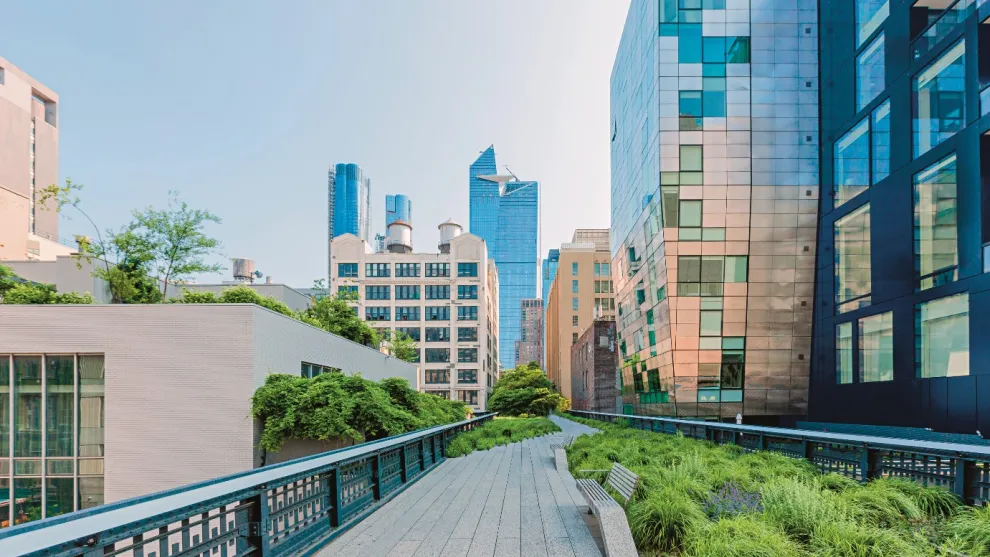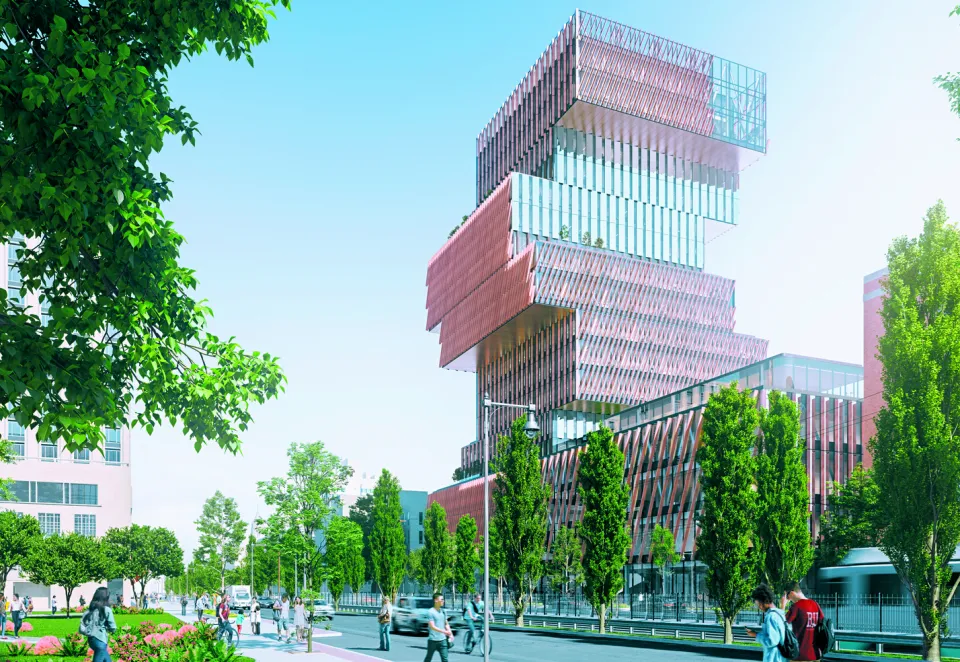Paving the way to truly circular concrete with recarbonation
The circular economy is a systematic approach to economic development that is based on the reuse and recycling of materials so that their life is infinitely circular.
Put simply, it is the idea that a system can grow without consuming our world’s precious finite resources. Creating a more circular economy is a critical part of achieving a net zero future, to be greener and smarter.
Recarbonation is a process that, in effect, recycles carbon dioxide (CO2). We have been achieving some breakthrough innovations at our R&D labs in Lyon, France, to recarbonate recycled old concrete, with CO2 and use it for other building material applications. Our results are game-changing. They open up the potential to re-use untreated CO2 at industrial sources, to create higher-performing materials for building.
It’s perfectly circular: the CO2 from an industrial source is reused to improve product performance; the concrete rubble absorbs the CO2 as part of the process, locking it inside the final product, and, if we use old concrete rubble, then we use fewer raw materials. Every tonne of rubble that is recycled means that a tonne of raw materials is preserved. Now, that’s a breakthrough.

Recarbonate to create 100% recycled concrete
Construction and demolition waste can already be used to create new low-carbon building materials - particularly for aggregates, a key ingredient of concrete. But this recycled rubble made from old concrete is sometimes more porous. It means that it’s typically used for applications in road sub-bases rather than concrete.
Our innovation teams set out to produce concrete made from 100% recarbonated recycled rubble. That’s creating concrete that is fully recycled, high performance and low carbon. It literally paves the way to truly circular concrete!
Recarbonation to make high-performance concrete with FastCarb
We’re already well on the way to making this happen with FastCarb. It’s a technology that creates improved recycled aggregates by adding untreated diluted CO2 to the old concrete.
The good thing is that the CO2 comes from our own industrial processes, captured from the flue-stack. The CO2 then reacts with the old concrete to create a coating that effectively seals the rubble. The result - high-performance 100% recycled aggregates - opens up a world of potential to be used in other applications.
“The project is part of our quest to achieve carbon neutrality and create an economy that is truly circular”, says Xavier Guillot, Head of Product Certification and Standards, Holcim France. “The really smart part is that the concrete absorbs the CO2 as part of the process, locking it inside the final product and helping to prevent its release into the atmosphere. The CO2 can be sequestered from any nearby industrial source, for example, a cement, coal, or steel plant. This means that cement plants could actively reduce their own carbon emissions as well. It’s a great example of the circular economy in practice.”
FastCarb is the outcome of a project partially funded by the French government. The technology has been created by Holcim and 22 academic and industrial partners, including Holcim. In 2021, the pilot has been taken to the industrial testing stage at our site in Val d’Azergues, France with some great results: we discovered that the carbon footprint of concrete made with 100% carbonated recycled rubble could be reduced by up to 25%.
We’re already exploring other areas of recarbonation. In Austria, a similar technology to FastCarb is being used in R&D where we grind old concrete in our mills while reinjecting it with untreated CO2 from our own plant. We’re hoping for more promising results.

A multiplier for a net zero transformation
Recarbonisation offers incredible possibilities in the world’s quest for net zero emissions with hugely positive implications for the environment when you multiply the potential applications of using carbonated rubble.
It opens up the opportunity to reuse large quantities of demolition and construction waste from landfills - and recycle the rubble into high-performing concrete.
It makes it possible to reduce emissions at industrial sites using available CO2.
It reduces emissions within the concrete itself by 25% - a huge amount if this is applied at scale.
And, critically, it demonstrates that we can build and grow without relying on nature’s precious resources.
At Holcim, we will continue to invest in our research and development to find innovative and sustainable solutions, building progress for people and the planet.

At Holcim we’re working to shape a world that is smarter, driving circular economy and digitalization to make more with less. We have ambitious goals to reinvent the building industry thanks to innovation.







